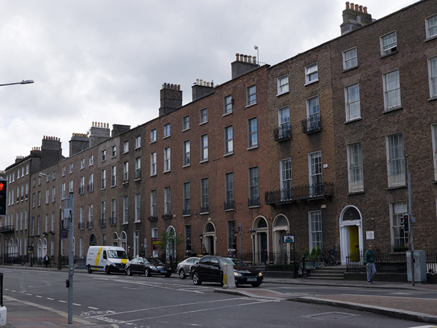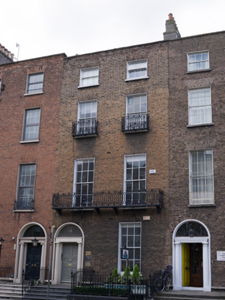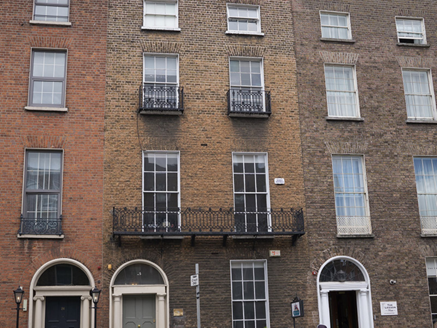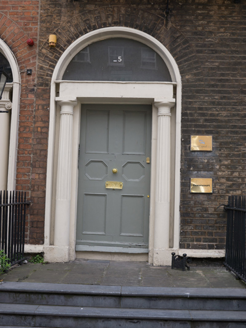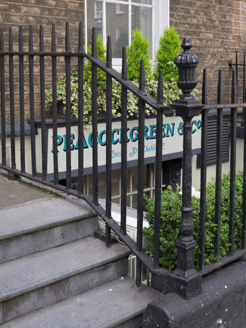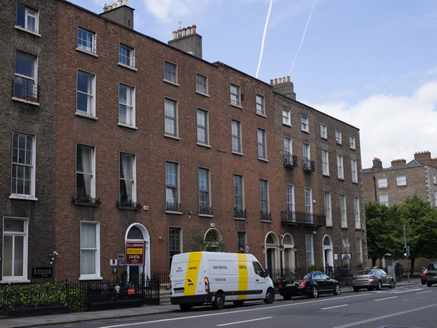Survey Data
Reg No
50110510
Rating
Regional
Categories of Special Interest
Architectural, Artistic
Original Use
House
In Use As
Office
Date
1800 - 1820
Coordinates
316278, 232933
Date Recorded
25/06/2017
Date Updated
--/--/--
Description
Terraced two-bay four-storey over basement former house, built c. 1810, having two-storey and single-storey projections to rear (west) elevation. Now in use as offices, restaurant to basement. M-profile hipped slate roof concealed behind red brick parapet with granite coping. Rendered chimneystacks having clay pots. Red brick, laid in Flemish Bond to walls to front (east) elevation, and in English Garden wall bond to walls to rear, with cut granite plinth course over rendered walls to basement. Square-headed window openings having granite sills and raised rendered reveals, mixed three-over-three pane, six-over-six pane and ten-over-ten pane timber sliding sash and replacement windows. Gibbsian surround to basement window. Fascia on moulded render console brackets to basement window. Decorative wrought-iron balconettes to windows to first and second floors. Wyatt window to rear. Some wrought-iron security railings. Round-headed door opening with moulded render surround, fluted Doric columns and entablature. Plain fanlight having some painted numerals. Timber panelled door. Limestone platform with wrought-iron boot-scrape, replacement steps. Wrought-iron railings having cast-iron corner posts with urn finials, set on carved granite plinth wall to front.
Appraisal
This house was built in the characteristic style of the Georgian period, with pleasing well-considered proportions enlivened by fine detailing, seen in the balconettes and doorcase. The preservation of the Wyatt window to the rear is notable as a rare survival in this area of the city. The character of the surrounding area was established by the construction of townhouses built for Lord Dunboyne, the Duke of Ormonde. Lower Leeson Street was an important routeway in Georgian Dublin, leading to Donnybrook from St. Stephen's Green. The buildings lining the street are united by a shared sense of proportion, creating a cohesively read streetscape.
